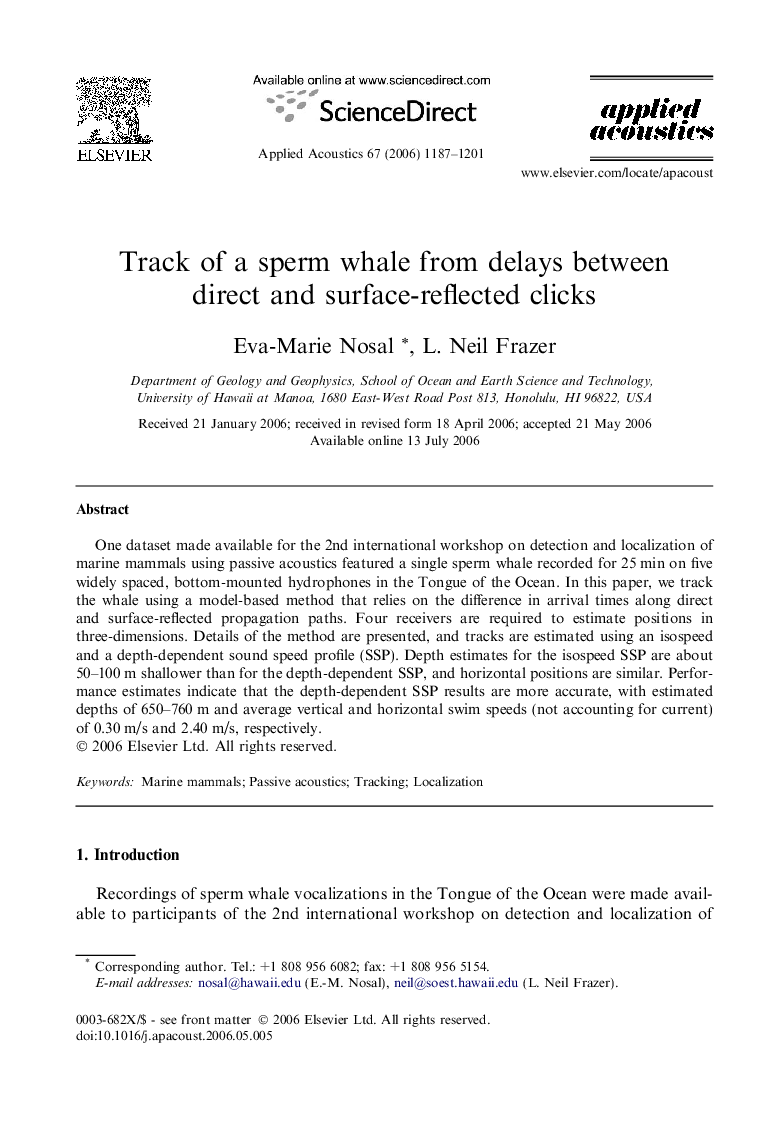| Article ID | Journal | Published Year | Pages | File Type |
|---|---|---|---|---|
| 755483 | Applied Acoustics | 2006 | 15 Pages |
One dataset made available for the 2nd international workshop on detection and localization of marine mammals using passive acoustics featured a single sperm whale recorded for 25 min on five widely spaced, bottom-mounted hydrophones in the Tongue of the Ocean. In this paper, we track the whale using a model-based method that relies on the difference in arrival times along direct and surface-reflected propagation paths. Four receivers are required to estimate positions in three-dimensions. Details of the method are presented, and tracks are estimated using an isospeed and a depth-dependent sound speed profile (SSP). Depth estimates for the isospeed SSP are about 50–100 m shallower than for the depth-dependent SSP, and horizontal positions are similar. Performance estimates indicate that the depth-dependent SSP results are more accurate, with estimated depths of 650–760 m and average vertical and horizontal swim speeds (not accounting for current) of 0.30 m/s and 2.40 m/s, respectively.
